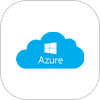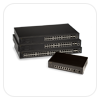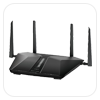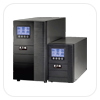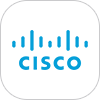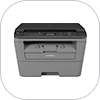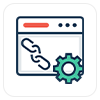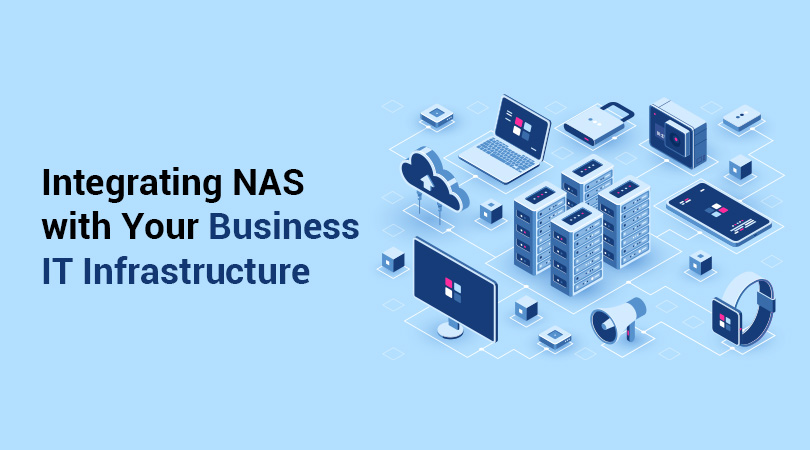
Your organization is overwhelmed by data, yet must function effectively to avoid sinking. You need to bring your data storage system under control. Today, almost every business and every industry is facing a data explosion. Whether it is operational critical data or customer information, multimedia content, or archives, increasing demand always creates strong, manageable, and scalable storage systems even for small enterprises. Network Attached Storage has become an integral part of today’s business IT infrastructure, offering centralized storage that is simple to use and cost-effective. However, simply connecting to a NAS device is not sufficient; it must be integrated strategically, following best practices in order to realize its full potential and operation in your current IT infrastructure.
This detailed manual explores the best practices for deploying NAS to your business IT environment, from planning and security considerations to optimizing performance and long-term administration. By following these guidelines, you can turn your NAS from a simple storage device into a valuable resource that boosts productivity, streamlines processes, and protects your precious data.
-
Define Your Needs and Objectives: Laying a Solid Foundation
Even before thinking about particular NAS models, the very first and most important thing to do is to carefully examine your business’s specific storage needs and goals. This means asking basic questions like:
- What kind of data will be stored? (e.g., documents, databases, multimedia, virtual machine images) Various types of data have different performance and capacity requirements.
- What is the existing storage capacity and projected growth? Future storage requirements need proper prediction to determine the necessary NAS system scalability.
- How many users will require access, and what are their access patterns? Understanding the number of users and how frequently they access data will help determine network configuration and NAS performance needs.
- What are the performance requirements for various users? Certain applications, such as video production or database servers, require high read/write speeds.
- What are the data protection and disaster recovery requirements? Establishing RTO (Recovery Time Objective) and RPO (Recovery Point Objective) will determine if features such as RAID configurations, snapshots, and replication are necessary.
- What is the cost of the NAS device and related infrastructure upgrades? Cost vs. performance and features need to be balanced.
- What are the current IT infrastructure pieces (servers, network equipment, operating systems)? Compatibility and integration with your current environment are important.
By carefully recording your needs and goals, you can develop a clear plan for your NAS integration project, making sure that the chosen solution fits your business needs.
-
Strategic Network Planning: Connectivity and Performance Assurance
A NAS system is, by definition, a network-based storage solution, so proper planning of the overall network is essential for peak performance and reliable access. Some of the considerations are:
Network Infrastructure Analysis: Assess the available network infrastructure devices, including switches, routers, and cabling. Ensure that the entire network is able to support the anticipated data traffic originating from NAS. An upgrade may be justified if high-speed access is needed, utilizing Gigabit Ethernet or perhaps even 10 Gigabit Ethernet.
Separate Networking Segment (Optional but Resolved): If NAS utilization is significant, dedicate the NAS to a separate network segment or VLAN (Virtual Local Area Network). This isolates NAS traffic, prevents any congestion of the primary network, and provides additional security.
IP Addressing and DNS: Employ static IP addressing to make a NAS available for an extended duration. Properly set up DNS (Domain Name Service) entries to enable the NAS to be easily accessed by name.
Link Aggregation (LAG/Bonding): A common feature for most NAS systems is link aggregation, which aggregates two or more network interfaces to function as one logical link. The connection setup delivers improved reliability through redundancy enhancement and fault-resilience features with greater bandwidth availability. LAG must be configured on both the NAS and the network switch.
Quality of Service (QoS): In the event of network congestion, QoS deployment can assist in guaranteeing NAS traffic, and hence a consistent quality level.
-
Solid Security Measures: Protecting Your Precious Data
Securing your data is a serious issue because your NAS will likely store sensitive business information. Implementing and maintaining security measures is non-negotiable.
Strong Passwords and Access Control: Enforce strong, unique passwords for both the NAS administrator account and every user account. Implement role-based access control (RBAC) to ensure users have only the permissions necessary for accessing shared folders and data.
Firewall Configuration and Network Segmentation: As mentioned earlier, network segmentation enhances security by isolating the NAS from other parts of the network. Hence, firewall rules must be configured on both the NAS and network devices to restrict unauthorized access.
Encryption (At Rest and In Transit): Encrypting sensitive data on the NAS (at-rest) helps protect the data in case of theft. Use secure protocols such as HTTPS or SFTP to encrypt data in transit and prevent interception.
Security Updates: NAS Vendors regularly release firmware that includes critical security patches. It is important to have a policy to establish these updates.
Antivirus and Anti-Malware: Some consumer-grade NAS devices include built-in antivirus and anti-malware features. These should be enabled and configured properly to detect and neutralize potential threats.
2FA: Secure administrator and user account protection in your organization by using 2FA along with a password.
Regular Security Audits: Conduct security audits regularly to identify and address vulnerabilities, ensure compliance with policies, and maintain the overall integrity of the NAS environment.
-
Best RAID Configuration: Balancing Performance and Redundancy
RAID (Redundant Array of Independent Disks) is an essential capability of the majority of NAS devices, delivering data redundancy and/or performance gains by taking multiple physical disks and presenting them as a single logical unit. The selection of an appropriate RAID level is essential:
RAID 0 (Striping): Improves performance, but it does not protect the data from loss after drive failure. Drive failure could result in data loss when using RAID 0. Usually, not suitable for business-critical data.
RAID 1 (Mirroring): Offers robust data protection through an exact data duplicate between two storage drives. When it comes to data read speed, RAID 0 performs well, yet its data write speed remains similar to a single drive configuration. Mission-critical data should utilize this configuration because it provides high up0074ime alongside data availability.
RAID 5 (Striping with Parity): Offers a strong balance of performance and redundancy. Data is striped across multiple drives with parity information distributed among them, allowing the array to tolerate the failure of one drive without data loss. A system using RAID 5 must include at least three disk drives.
RAID 6 (Striping with Double Parity): If your storage system encounters the failure of two drives at once, RAID 6 (Striping with Double Parity) protects your data from complete loss. The system offers additional redundancy yet maintains reduced write performance compared to what RAID 5 provides. Needs a minimum of four drives.
RAID 10 (Stripe of Mirrors): A Combination of the performance of RAID 0 with the redundancy of RAID 1. Provides exceptional performance with high resilience capabilities, although it demands at least four drives while costing more for the usable storage capacity.
Adequately weigh your requirements for performance, data importance, and budget when choosing the RAID level suitable for you.
-
Implementing Effective Backup and Disaster Recovery Plans
While RAID provides data redundancy and protection against drive failure, it should not be used as a substitute for a comprehensive backup and disaster recovery plan. Be sure to implement the following measures:
Regular Local Backups: Perform regular backups of your NAS data to external hard drives, another NAS device, or a dedicated backup server. This allows for a quick recovery if a local hardware failure occurs.
Off-site Backup: Maintain an off-site backup strategy to protect against physical disasters like fire and theft. This can involve using cloud backup solutions or copying data to the secondary NAS in a different location.
Snapshots: Use the snapshot features on your NAS to create point-in-time copies of your data. Snapshots allow for the quick recovery of files or folders that have been accidentally deleted or corrupted.
Testing Your Recovery Plan: Testing your backup and recovery processes on a regular basis will help ensure that they are functional and that you meet your defined RTO.
-
Performance Optimization: Keeping Things Running Smoothly
These methods will ensure optimal performance and provide excellent all-around optimization, keeping your users satisfied:
Regular Monitoring: Monitor your NAS performance statistics, i.e., CPU, RAM, network traffic, and disk access, to detect and diagnose potential bottlenecks.
Disk Defragmentation (As Needed): While less of a concern for newer file systems, periodic defragmenting of the NAS file system can improve performance, particularly for older systems or those with significant fragmentation.
Caching Mechanisms: Utilizing read/write caching capabilities of your NAS device accelerates performance for frequently accessed data. Some NAS devices support SSD caching for faster data access.
Network Optimization: Ensure your network infrastructure is properly configured and optimized for NAS traffic, as previously mentioned.
Firmware Update: Have your NAS firmware updated and upgraded regularly to enhance performance and fix bugs.
-
User Training and Documentation- Empowering Your Team:
Users should be well-documented and properly trained to ensure the team can utilize the NAS effectively in adherence to the established policies:
User Training: Provide training to users on how to use shared folders, save and retrieve files, and understand any policies required for managing data.
Clear Documentation: Develop thorough documentation on the NAS usage process, backup process, security protocols, and troubleshooting.
Support Channels: Provide well-defined support channels for the user in the event of any issues regarding the NAS.
-
Regular Maintenance and Administration: Ensuring Longevity, Reliability, and Optimal Performance
NAS integration is not a one-time process. To maintain optimal performance over the long term, it needs regular maintenance and administration:
Regular Health Checks: Perform regular health checks of the drives, RAID, and the entire system.
Log Monitoring: Regularly check logs for errors or warning signs that could indicate potential problems.
Capacity Planning: Continuously monitor storage usage and plan for future capacity upgrades.
Firmware Updates: Stay up to date with new releases.
Dust Control and Cooling: Maintaining a NAS device’s cleanliness and keeping it in an environment where there is proper ventilation avoids overheating and hardware failure.
Conclusion: Finding the Accessibility of Integrated NAS
Theoretically, integrating a NAS into your business IT infrastructure will significantly enhance data management if planned out wisely and according to well-documented standards. For instance, proper planning of the deployment, prioritization of security, streamlined performance, and comprehensive data recovery mechanisms will turn your NAS into a dependable, effective, and affordable means of storage that enables your business to just manage itself while expanding into the digital age. User education and maintenance at this stage are as crucial as the initial configuration. Practice what is learned and unleash your NAS to the fullest while building a solid foundation for your company’s data-driven future.

































